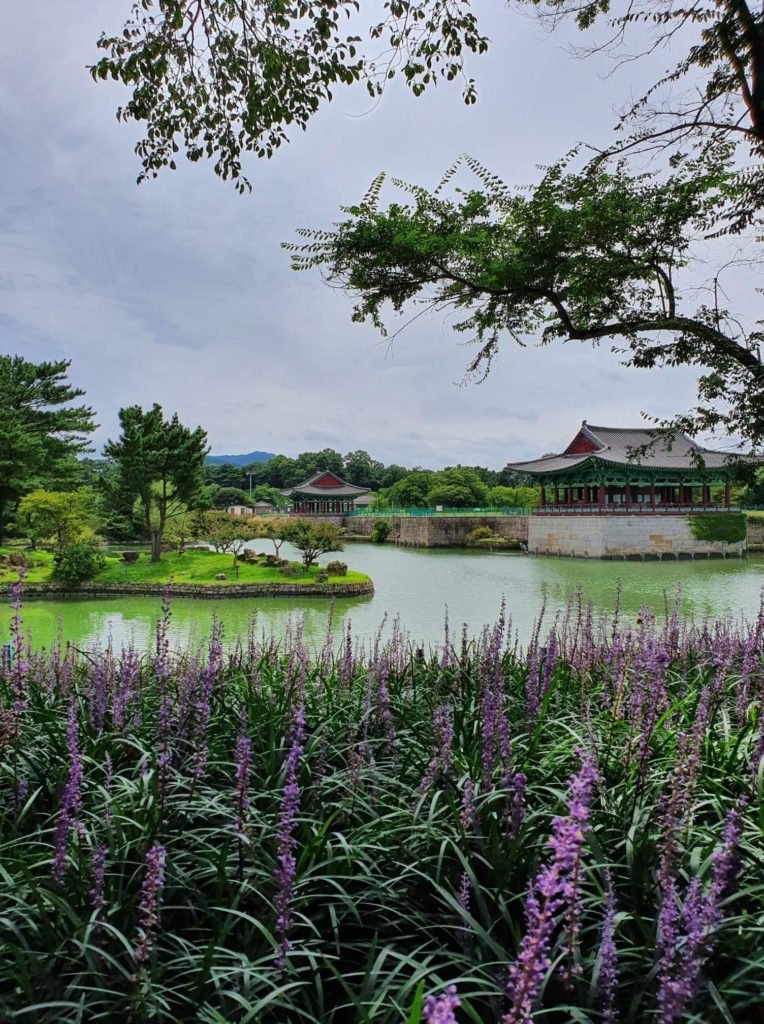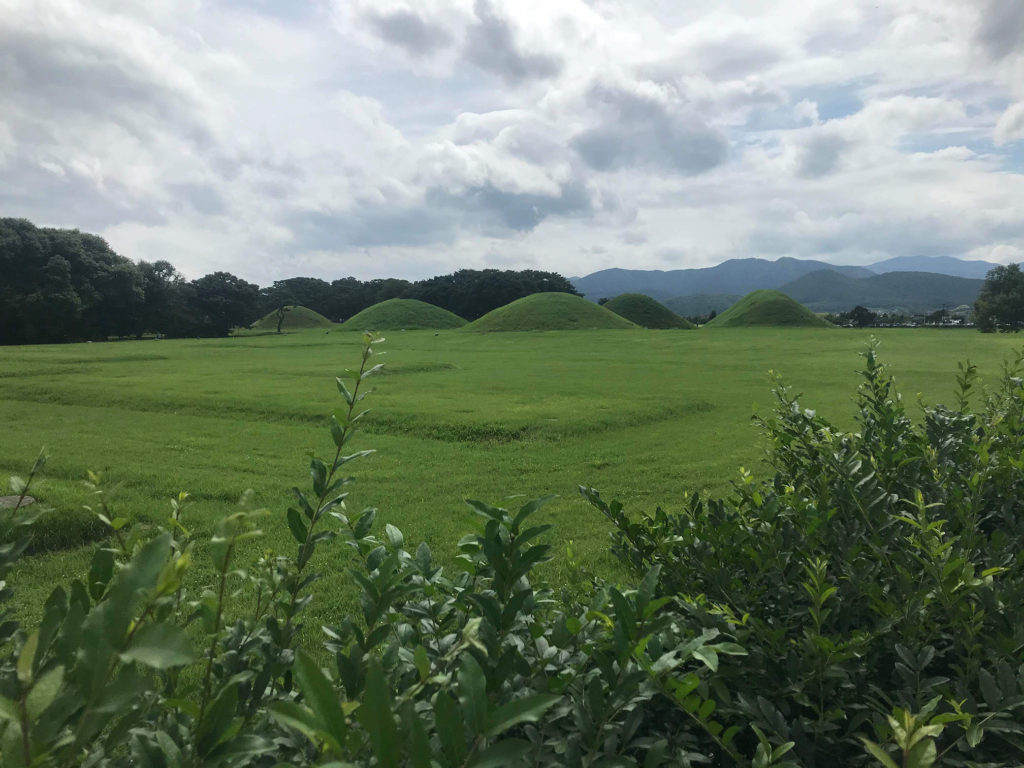Summer Road Tripping in 2020
Written and photographed by Maria Moschini.
Ever since we arrived in South Korea last April, my friend has said that one of the things she wants to do before she leaves is get a summertime road trip-worthy car, and in March this year, she did just that. I knew she was eagerly awaiting the chance for an adventure, and when she mentioned the possibility of an east coast road trip to me a couple of weeks before the semester ended, I was immediately on board. We recruited another friend and, armed with snacks, a specially made playlist, and our camping gear, we set off!
We were originally headed for Chilpo Beach, north of Pohang, to set up camp for the night. But as we drove, the continued rain and reports of flooding from the days before were not putting our minds at ease, so the beach would have to wait. We decided instead to ditch our camping plans, and after a quick midway stop for some dinner, we went on and stopped in Gyeongju, the “City of Ancient Tombs,” and checked ourselves into Dahyun Hostel for the evening.
Following a good night’s sleep, we woke to find the rain had finally stopped. After some breakfast at our hostel and a good cup of coffee, we were excited to get going and explore this beautiful, historically significant city that has many things to see and do.
We headed straight for the Bomun Tourist Complex to see Bomun Lake, which is at its center. Once there, we took a stroll down a pathway alongside the lake, snapped a few pictures, and crossed a bridge to double back to the car. With the afternoon sun beating down on us, we decided that a few moments in an air-conditioned café would be appreciated by all of us.
After some coffee and a snack, we were off to our next location: Cheomseongdae. In my first few weeks in Korea, Cheomseongdae was mentioned in one of my classes. My students had told me that it means “star-gazing tower” in Korean, and that it is the oldest surviving astronomical observatory in Asia, so I was keen to see it.
When we arrived there, we realized that there were many other sites nearby, all part of the Gyeongju National Park. So, we parked the car and set off on foot again. As we strolled towards the observatory, we caught sight of a few of the ancient tombs that Gyeongju is so well known for. The area around the observatory was full of tourists patiently awaiting photo opportunities, so while we waited our turn, we Googled some quick facts and discussed the various intricacies of its design. After a few pictures, we spotted a nearby map and, since we had limited time, decided that we wanted to see Gyerim Forest, Donggung Palace, and Wolji Pond.

After the forest, on our way to the pond, we came across Seokbinggo. This site was also mentioned by my students and is an ancient icehouse surrounded by many interesting trees as well as excavation sites. One of the things we appreciated about the area is that there are many signboards in English explaining the history of each site that we visited. One such board told us that the icehouse is a rectangular shape, has been there since the 18th century, and is made of about a thousand stones. To my delight, I now had more information and photos of both sites to show my students when I got back to school.
Once we reached Donggung Palace, we paid a 3,000 won entrance fee and another sign told us that it was one of the main palaces of the United Silla Kingdom and that Wolji Pond, which was uncovered during excavation and dredging during 1975, was part of it. We strolled around the site and saw many artifacts with a lot of information that we found very interesting.

It turned out that we had spent a lot more time in Gyeongju than we had originally intended, so we hurried back to the car and stopped off in Pohang for a quick bite to eat. Then we set off further up the coast and stopped off at a beach called Jumunjin Beach in Gangneung, where the well-known bus stop is located that is on the cover of BTS’s You’ll Never Walk Alone album.
The beach has a clean and spacious campsite with ample parking and restrooms nearby. We paid 20,000 won per tent and set up camp for the night with some snacks and drinks. After a while, we walked down to the beach. With its white sand and clear water, it is one of the more beautiful beaches I have been to in Korea. We strolled to the end of the beach and found stairs that had a Korean-style pavilion at the top overlooking the ocean, so we settled down there to watch the moon rise.
In the morning, after a quick dip in the ocean and a bite to eat, we packed up our tents and headed to Sokcho. At this stage, we were all craving some delicious Korean cuisine, so we headed straight for the downtown area and found ourselves some haejang-guk. After lunch, it was time to hit the beach. We made our way to Sokcho Beach, which was overcrowded and slightly underwhelming, but nevertheless, we spent the afternoon in the sun and sea. After much banter, laughs, and spans of pictures, our adventure had unfortunately come to an end.

It was so great to see a few places along the eastern coast of this beautiful country, but I really wish that we had had more time to stop at more of the beaches and tourist attractions that the east coast has to offer. I would recommend at least a week to take in all there is to see and do. The best part is that there are loads of camping sites along the way, so you can stop almost anywhere and set up camp for the night. There are some things that we missed out on this time around, but I am hoping to get the chance to go back sometime soon and see the rest.
he Author
Maria Moschini is a high school English teacher living in Gangjin. Originally from Johannesburg, South Africa, Maria moved to South Korea in April 2019. She has a degree in English literature and a postgraduate in teaching. Maria loves the opportunity that South Korea gives her to pursue her passions for teaching and traveling. Instagram: @mariamoschini





